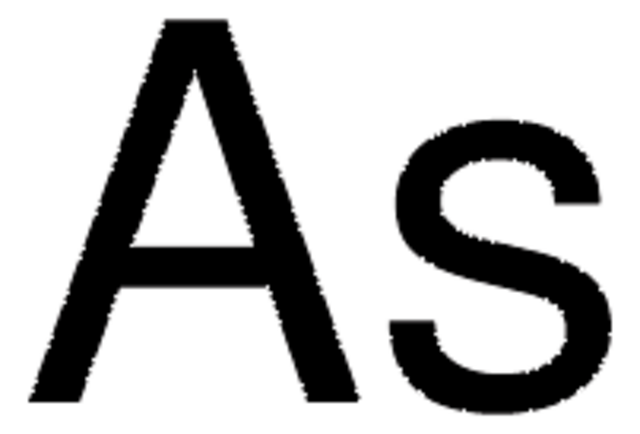GF27009514
Iron
rod, 150mm, diameter 5.0mm, as drawn, 99.99+%
Sinônimo(s):
Iron, FE007943
Faça loginpara ver os preços organizacionais e de contrato
About This Item
Fórmula linear:
Fe
Número CAS:
Peso molecular:
55.85
Número MDL:
Código UNSPSC:
12141721
ID de substância PubChem:
NACRES:
NA.23
Produtos recomendados
Ensaio
99.99%
Formulário
rod
fabricante/nome comercial
Goodfellow 270-095-14
resistividade
9.71 μΩ-cm
C × diâmetro
150 mm × 5.0 mm
p.e.
2750 °C (lit.)
pf
1535 °C (lit.)
densidade
7.86 g/mL at 25 °C (lit.)
cadeia de caracteres SMILES
[Fe]
InChI
1S/Fe
chave InChI
XEEYBQQBJWHFJM-UHFFFAOYSA-N
Descrição geral
For updated SDS information please visit www.goodfellow.com.
Informações legais
Product of Goodfellow
Escolha uma das versões mais recentes:
Certificados de análise (COA)
Lot/Batch Number
It looks like we've run into a problem, but you can still download Certificates of Analysis from our Documentos section.
Se precisar de ajuda, entre em contato Atendimento ao cliente
Já possui este produto?
Encontre a documentação dos produtos que você adquiriu recentemente na biblioteca de documentos.
Thomas A Russo et al.
Infection and immunity, 82(6), 2356-2367 (2014-03-26)
Hypervirulent (hypermucoviscous) Klebsiella pneumoniae (hvKP) strains are an emerging variant of "classical" K. pneumoniae (cKP) that cause organ and life-threatening infection in healthy individuals. An understanding of hvKP-specific virulence mechanisms that enabled evolution from cKP is limited. Observations by our
Laura M van Staalduinen et al.
Proceedings of the National Academy of Sciences of the United States of America, 111(14), 5171-5176 (2014-04-08)
The enzymes PhnY and PhnZ comprise an oxidative catabolic pathway that enables marine bacteria to use 2-aminoethylphosphonic acid as a source of inorganic phosphate. PhnZ is notable for catalyzing the oxidative cleavage of a carbon-phosphorus bond using Fe(II) and dioxygen
Eunna Choi et al.
Infection and immunity, 82(6), 2203-2210 (2014-03-20)
In order to survive inside macrophages, Salmonella produces a series of proteins encoded by genes within Salmonella pathogenicity island 2 (SPI-2). In the present study, we report that Fur, a central regulator of iron utilization, negatively controls the expression of
Hypoferremia of infection: a double-edged sword?
Kristen L Lokken et al.
Nature medicine, 20(4), 335-337 (2014-04-09)
Don-Kyu Kim et al.
Nature medicine, 20(4), 419-424 (2014-03-25)
In response to microbial infection, expression of the defensin-like peptide hepcidin (encoded by Hamp) is induced in hepatocytes to decrease iron release from macrophages. To elucidate the mechanism by which Salmonella enterica var. Typhimurium (S. typhimurium), an intramacrophage bacterium, alters
Global Trade Item Number
| SKU | GTIN |
|---|---|
| GF27009514-1EA | 4061825362793 |
| GF27009514-2EA | 4061829515560 |
Nossa equipe de cientistas tem experiência em todas as áreas de pesquisa, incluindo Life Sciences, ciência de materiais, síntese química, cromatografia, química analítica e muitas outras.
Entre em contato com a assistência técnica


